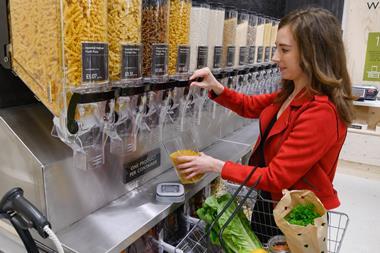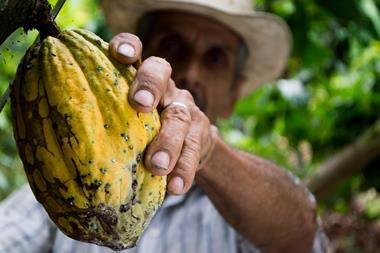While the press is filled with stories about how supermarket expansion is killing towns, it makes a refreshing change to hear a different story.
The Grocer (February 11) reported that retailers in Upper Norwood, near Croydon in South London, are pleading for a new supermarket to replace Morrisons, which shut last year. Retailers are claiming that the vacant 41,000 sq ft building has caused a sharp decline in trade in neighbouring stores.
The local council says it is doing its bit to attract a suitable replacement. Even the Virtual Norwood web site has taken on the cause. The online forum has a survey asking residents which supermarket they would like to take over the store. It is no surprise that the local online community is putting massive support behind Waitrose. Sainsbury and Tesco trail far behind in second and third places.
CACI’s analysis shows that the local demographics do, in fact, fit most comfortably with Waitrose. The catchment is dominated by the educated urbanites Acorn group. This young, affluent group, with relatively high levels of disposable income and a desire for quality food, makes up 48% of the catchment.
Tesco has a more broad appeal, though less enticing to educated urbanites, but ranks as the second most attractive fascia for the residents of Upper Norwood.
The Acorn chart shows that the Morrisons fascia did not have a good fit with the local shoppers as there are very few secure and struggling families, which are its bread and butter. No doubt this was a major factor in its decision to close the store, alongside the fact that, with a sales area of just under 25,000 sq ft, it did not easily fit with its portfolio.
While the demographics fit well, and CACI predicts a strong turnover from a Waitrose in Upper Norwood, it is still not surprising that the John Lewis Partnership-owned retailer does not appear in any rush to take on the site. This is largely because of the cannibalisation that is likely to occur.
Given the strong pull of Waitrose, with customers willing to travel long distances, CACI estimates that almost £12m per annum could be stolen from its existing surrounding stores. Most notably, the Beckenham store three miles away could lose as much as 19% of its trade.
Likewise, Tesco would face considerable cannibalisation, which could remove almost £10m from the large number of stores it has in south London.
While the biggest single store impacts are likely to be only as much as 4%, the sheer number of such impacts is likely to be a barrier to Tesco taking on the site.
With such a big risk for the two prime contenders, it seems likely that the people of Upper Norwood will have to accept any retailer that is willing to take on a store in Tesco and Waitrose’s heartland.
The Grocer (February 11) reported that retailers in Upper Norwood, near Croydon in South London, are pleading for a new supermarket to replace Morrisons, which shut last year. Retailers are claiming that the vacant 41,000 sq ft building has caused a sharp decline in trade in neighbouring stores.
The local council says it is doing its bit to attract a suitable replacement. Even the Virtual Norwood web site has taken on the cause. The online forum has a survey asking residents which supermarket they would like to take over the store. It is no surprise that the local online community is putting massive support behind Waitrose. Sainsbury and Tesco trail far behind in second and third places.
CACI’s analysis shows that the local demographics do, in fact, fit most comfortably with Waitrose. The catchment is dominated by the educated urbanites Acorn group. This young, affluent group, with relatively high levels of disposable income and a desire for quality food, makes up 48% of the catchment.
Tesco has a more broad appeal, though less enticing to educated urbanites, but ranks as the second most attractive fascia for the residents of Upper Norwood.
The Acorn chart shows that the Morrisons fascia did not have a good fit with the local shoppers as there are very few secure and struggling families, which are its bread and butter. No doubt this was a major factor in its decision to close the store, alongside the fact that, with a sales area of just under 25,000 sq ft, it did not easily fit with its portfolio.
While the demographics fit well, and CACI predicts a strong turnover from a Waitrose in Upper Norwood, it is still not surprising that the John Lewis Partnership-owned retailer does not appear in any rush to take on the site. This is largely because of the cannibalisation that is likely to occur.
Given the strong pull of Waitrose, with customers willing to travel long distances, CACI estimates that almost £12m per annum could be stolen from its existing surrounding stores. Most notably, the Beckenham store three miles away could lose as much as 19% of its trade.
Likewise, Tesco would face considerable cannibalisation, which could remove almost £10m from the large number of stores it has in south London.
While the biggest single store impacts are likely to be only as much as 4%, the sheer number of such impacts is likely to be a barrier to Tesco taking on the site.
With such a big risk for the two prime contenders, it seems likely that the people of Upper Norwood will have to accept any retailer that is willing to take on a store in Tesco and Waitrose’s heartland.











No comments yet